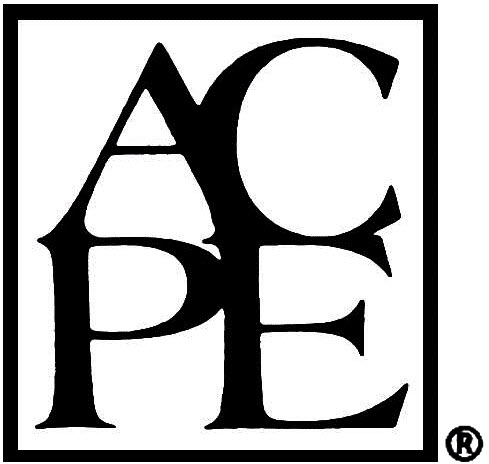Medication Errors
Patient Safety CE for Pharmacists
Are you a Pharmacy Tech? Check out the Pharmacy Tech version of this course.
Course Summary
Medication errors can occur at any stage of the prescription, administration, or monitoring of a drug. These preventable events can harm a patient. The identification and prevention of medication errors require an understanding of the root causes of medication errors. Once root causes are identified, a pharmacist can implement procedures and protocols to reduce and prevent medication errors, thereby promoting patient safety. If a medication error occurs, clinicians must know whether the error must be reported and when it should be reported. This course does not provide legal advice. Pharmacy staff should consult with their employer, a legal advisor, supervisor, online resources, or licensing boards to determine the laws regarding medication errors, incident report requirements, and reporting to governmental entities or patients. Pharmacists and pharmacy technicians can work collaboratively with health care teams to reduce and prevent future medication errors.
Define medication errors
Discuss the root causes of medication errors
Describe how to reduce and prevent medication errors
Explain how to respond to a medication error
Discuss the importance of implementing policies, procedures, or systemic changes that create a safer health care system for patients
Course Syllabus
I. Introduction
II. Medication Errors: Definition and Scope
III. Types of Medication Errors
A. Prescribing Errors
B. Transcription Errors
C. Preparation and Administration Errors
D. Dispensing and Monitoring Errors
IV. High-Alert Medications
V. Root Causes of Medication Errors
A. Lack of Training or Education
B. Unavailability of Guidelines for Medication Administration
C. Interruptions
D. Fragmentation of Medication Information and Poor Communication
E. Failure to Follow the Rights of Medication Administration
F. Time Constraints
VI. Medication Error Reduction Strategies
A. Standardized Medication Use Protocols
B. Computerized Systems
C. Education to Fill Knowledge Gaps
D. Pharmacy Workflow Strategies
E. Pharmacist-led Educational Interventions
F. Pharmacist-led Medication Reconciliation Programs
G. “Rights” of Medication Administration
H. High-Alert Medications in Acute Care Settings
I. Awareness of Error-Prone Abbreviations
J. Medication Errors Reporting Program (MERP)
K. Patient Education
L. Pharmacist Involvement with Over-the-counter (OTC) Medications
VII. Risk Management and Reporting Medication Errors
VIII. Disclosing Medication Errors to the Patient
IX. Quality Assurance vs Quality Control Roles
X. Summary
- Read the course objectives and faculty planner disclosure
- Read the course material
- Complete the post-test with a minimum score of 70% and complete the course evaluation form.
- Results are automatically submitted to CPE Monitor
Faculty Planner Disclosure
The following individuals were involved in developing this activity: Steven Malen, PharmD, MBA, and Pamela Sardo, PharmD, BS. None of the individuals involved in developing this activity has a conflict of interest or financial relationships regarding the subject matter. There are no financial relationships or commercial or financial support relevant to this activity to report or disclose by RxCe.com or any of the individuals involved in the development of this activity.
Unlabeled Use Disclosures
The information provided in this course is general in nature and it is solely designed to provide participants with continuing education credit(s). This course and materials are not meant to substitute for the independent, professional judgment of any participant regarding that participant’s professional practice, including but not limited to patient assessment, diagnosis, treatment and/or health management. Medical and pharmacy practices, rules, and laws vary from state to state, and this course does not cover the laws of each state; therefore, participants must consult the laws of their state as they relate to their professional practice. Healthcare professionals, including pharmacists and pharmacy technicians, must consult with their employer, healthcare facility, hospital, or other organization, for guidelines, protocols, and procedures they are to follow. The information provided in this course does not replace those guidelines, protocols, and procedures but is for academic purposes only, and this course’s limited purpose is for the completion of continuing education credits. Participants are advised and acknowledge that information related to medications, their administration, dosing, contraindications, adverse reactions, interactions, warnings, precautions, or accepted uses are constantly changing, and any person taking this course understands that such person must make an independent review of medication information prior to any patient assessment, diagnosis, treatment and/or health management. Any discussion of off-label use of any medication, device, or procedure is informational only and such uses are not endorsed hereby. Nothing contained in this course represents the opinions, views, judgments, or conclusions of RxCe.com LLC. RxCe.com LLC is not liable or responsible to any person for any inaccuracy, error, or omission with respect to this course, or course material.
Computer Hardware/Software Requirements
Please ensure the device you plan to use meets these requirements and specifications:
- Operating System: Windows 7,8,10, or 11 /Mac OS X 10.9 or later/iOS/Android
- Supported Browsers: Microsoft Edge, Firefox, Google Chrome, Safari, Opera
- A connection to the internet
- For Live Webinars or Conferences: GoToWebinar application for iOS, Android, Mac, or PC. You cannot 'call into' a live conference.
Rating: 3.99/5
Based on the ratings of 403 customers
- Target Audience: Pharmacist
- Secondary Audiences: This educational activity is also for other healthcare professionals, such as nurses, physicians, or others who may be part of a healthcare team and may be interested in this educational topic. A healthcare team approach to patient care may be discussed in this activity, as applicable. No state board or professional organization has evaluated this activity to determine whether it meets the continuing education requirements of nurses, physicians, or other professions not listed under the “Target Audience” described above. Always verify with individual employers or supervisors whether they will accept this educational activity upon completion.
- Contact Hours: 2.0 (0.2 CEUs)
- Activity Release Date: 9/9/2025}
- Activity Expiration Date: 9/9/2028}
- Activity Type: Knowledge
- UAN: 0669-0000-25-112-H05-P
- Topic: Patient Safety
- CeBroker Number: 20-1327783
Faculty:
Preview the Materials:

RxCe.com, LLC is accredited by the Accreditation Council for Pharmacy Education as a provider of continuing pharmacy education.